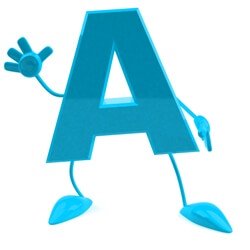International Phonetic Alphabet (IPA)
English Pronunciation, Lesson 01
The International Phonetic Alphabet, or IPA in short, will help you learn how to pronounce correctly each and every word in English! But first, you need to learn what it is, and how to use it. Read the following explanation, and watch the videos. Answer the questions in the end to test your understanding.

Click Here for Step-by-Step Rules, Stories and Exercises to Practice All English Tenses
So, how can you learn the sounds of English?
There is a special system that uses a group of symbols to
represent each sound.
Follow our tutorial to learn what sound
each symbol indicates,
and how to pronounce that sound correctly.
That way, you will learn and practice the actual sounds of
English!
Here is the place to mention that this tutorial covers American
pronunciation only.
Some Definitions
The system of symbols is called International Phonetic Alphabet, or IPA in short.Phonetic means "using special signs to represent the sounds of speech".
It comes from the Greek word phone which means "sound".
Vowel is a sound we make when the breath flows out through the mouth freely, without being blocked. The English letters a, e, i, o, u are called vowels, because they represent such sounds.
It comes from the Latin word vox which means "voice".
Diphthong is a vowel sound made by pronouncing two vowels quickly one after the other. For example, the vowel sound in "loud" is a diphthong.
It comes from the Latin word diphthongus which means "two sounds".
Consonant is a sound we make that is not a vowel. The breath is somehow blocked on its way out of the mouth. For example, the sound B is made when breath flow is stopped with the lips. All the English letters which are not vowels are called consonants. These are: b, c, d, f, g, h, j, k, l, m, n, p, q, r, s, t, v, w, x, y, z.
Watch the following video to learn how to use the International Phonetic Alphabet. It also gives a quick review of the sounds we will learn later.
Have you read the explanations and watched the videos?
Great!
You are almost ready to move on to the next lesson, but before
that, make sure you know the answers to the following questions:
- How many sounds (more or less) are there in the English
language?
- What is the IPA?
- How can the IPA help YOU?
- What is a vowel?
- What is a diphthong?
- What is a consonant?
Well done! You have completed the International Phonetic Alphabet (IPA) lesson.
Let's move on...
Your next lesson: Lesson 02, Word Stress and Syllables
Get Updates, Special Offers, and English Resources
Download your FREE GIFT (the first two chapters of
English Short Stories Book and Workbook)
as soon as you join!

By submitting your email, you consent to receiving updates and newsletters from us and to the sharing of your personal data with third parties for the purposes of sending you communications. We will not spam you. You can unsubscribe at any time. For more information, please see our privacy policy.





